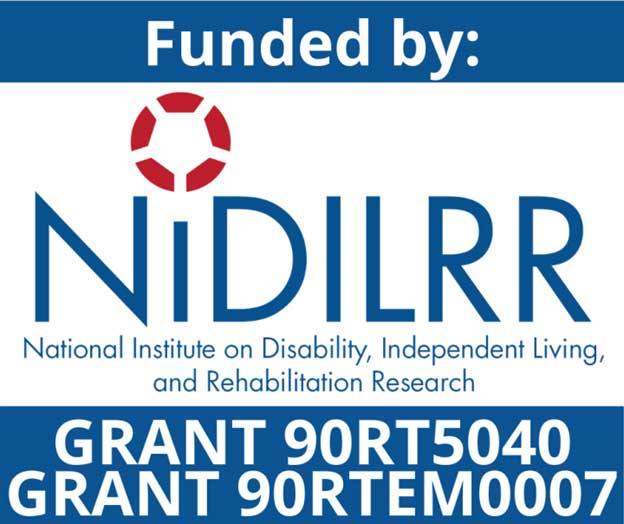The number of American adults with vision loss is expected to double over the next 30 years. Read more about why and how collaborating with occupational therapy (OT) service providers may help improve services provided by state Older Individuals who are Blind (OIB) programs.
Why Collaborate?
The number of American adults with vision loss is expected to double over the next 30 years. Limited funding and a lack of certified professionals who work with individuals with blindness and low vision (BLV) have restricted the ability of BVI programs to respond to this increasing population. The Older Individuals who are Blind (OIB) program, which serves those age 55 and older who do not have a goal of returning to work, served less than 2% of those potentially eligible for services in 2013, indicating that there is a large, unmet need.
Collaborating with occupational therapy (OT) service providers may help increase the quality of services and the number of individuals with vision loss served while also lowering the financial burden of services and more efficiently distributing resources.
What Does Collaboration Look Like?
Traditionally, OT professionals have not provided low vision services. But a few unique collaborations demonstrate what OT-BVI partnerships can accomplish:
NewView Oklahoma is a nonprofit agency that has provided BVI services since 2006. In 2011, NewView decided to incorporate OT professionals into their service delivery model, hiring OTs and developing a core training program to bring them up to speed on BVI content. New OT hires also spend time job-shadowing BVI professionals to learn about their duties and roles. No BVI-specific positions were lost as part of this partnership; instead, OTs were incorporated into the larger staff. The OTs are able to help reduce the effects of a shortage of BVI professionals, and they are helping NewView serve a larger client base.
Minnesota State Services for the Blind (SSB) is part of the federal OIB program. SSB worked with community stakeholders to find ways to provide services to more seniors while managing costs. Their solution was to provide BVI training to professionals already working with seniors, such as OTs. This training equips OTs and other professionals to perform basic BVI interventions; seniors whose needs require more extensive assistance are referred to SSB. As a result of this collaboration, SSB has found that some seniors’ resistance to getting help for their vision loss is bypassed when the initial vision loss conversation happens with a service provider who does not work exclusively with individuals with BVI.
Key Takeaways
- Collaboration between OT and BVI professionals can help increase referrals to BVI programs. Data suggest that there are many individuals who qualify for BVI services who do not currently receive the help they need. Working with a wider group of service providers helps BVI programs reach more seniors who may be in need of their services.
- Educating OTs about vision loss issues makes them a valuable member of the BVI service-provision pipeline. Each professional, whether BVI or OT, brings expertise in specific interventions, unique perspectives, and varied funding streams. This diversity only strengthens the BVI field.
- BVI professionals have unique roles that will not be usurped by OTs. • Neither of the two collaborative models described here resulted in any BVI positions being eliminated. Instead, the need for BVI professionals has only grown at the two agencies, as the demand for vision loss services has increased due to more senior citizens being reached.
Findings taken from the following article:
Farrow, K., Holden, C., Lecher, E., & Larges, L. (2018). Increasing access to vision rehabilitation services for seniors through collaboration with occupational therapists. Journal of Visual Impairment & Blindness, 112(3), 301-306.
